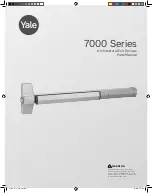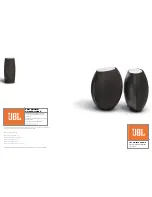
7
THERMAL PROTECTION
This system comes equipped with the following safety
devices:
Overload cutout:
To avoid overload while cutting.
The LED
G
(see fig 1) lights when active.
Pneumatic:
➡
Located on the torch inlet to prevent low air
pressure. The LED
L
lights when tripped (see fig.1).
Electrical:
1) In the event of a short-circuit between the nozzle and
electrode during arc striking
2) In the event of a short-circuit between the contacts of the
reed relay on circuit 22 (see exploded drawing).
3) When the electrode is worn to the point it must be
replaced. These conditions block the machine, and are
signaled by the lit LED
N
.
4) In addition, this machine is equipped with automatic
selection of the supply voltage and the following
protections:
A) 230V Power supply: during start-up, the machine
remains blocked (LED
N
lit) if the voltage is below
200V. After start-up, the machine runs at as low
as 180V.
B) 115V Power supply: during start-up, the machine
remains blocked (LED
N
lit) if the voltage is below
100V. After start-up, the machine runs at as low
as 90V.
Lightweight and Variable Input Voltage Selections
The plasma cutter is able to operate on either 115 volt or 230
volt service using its automatic voltage input feature. The
advanced inverter design requires much less amperage
input thus saving on electricity costs. This along with its
lightweight design, allows it to be used anywhere there is
electric service and compressed air available.
Adjustable Arc Control
The PLASMA30i adjustable output arc control allows the
user to easily cut thin metal, up to 3/8” and sever up to.1/2”.
With the adjustable output control, the cutting arc can be
adjusted to cut one layer of material without cutting the
second layer. This can be extremely useful in the
automotive sector where an outer panel may be removed
without cutting through an inner panel.
Many industrial segments will benefit using the PLASMA30i
because of its multiple input, lightweight design and
adjustable arc feature. The plasma cutter eliminates the
need of using oxygen acetylene cutting techniques that not
only would be cumbersome to move, also more costly.
WARNING
•
Do not remove or short-circuit the safety
devices.
•
Use only original spare parts.
•
Always replace any damaged parts of the
machine with original materials.
•
Use only torches type CP40.
•
Do not run the machine without its housings.
This would be dangerous to the operator and
anyone else in the work area, and would prevent
the machine from being cooled properly.
DESCRIPTION OF EQUIPMENT cont’d

































